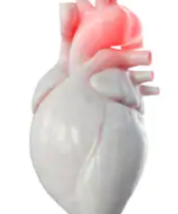
A vascular surgeon who performs aortic repairs answers if weightlifting can cause aortic dilatation.
“With regard to aortic dilatation in athletes, these kind of exercises (lifting weights) do in fact, over a long period of time, result in a compensatory dilatation of vessels, including the aorta,” says Seyed-Mojtaba Gashti, MD, a board certified vascular surgeon with Broward Health Medical Center in Florida.
When an athlete, particularly one who does weight lifting, learns he has an enlarged or dilated aorta, his first instinct might be to conclude that working out caused this, and that it’s a good thing, not a bad thing.
Unfortunately, aortic dilatation in the truest sense is a crushing blow to a person who lifts weights.
The diagnosis of pathological dilatation (dilation or enlargement) isn’t always determined by just one reading off of one slice of the great vessel.
A more definitive imaging test may detect a smaller diameter, and reveal that the measurement, when taken in context with the entire aorta, actually shows a normal structure.
An athlete, upon learning that a slice of his aorta is at the upper limits of normal, or borderline aneurysmal in terms of centimeter measurement, wants to know if exercise can lead to this as part of a remodeling of the vessel as it adapts to greater cardiac output.
Dr. Gashti explains that the compensatory dilatation of the aorta comes about from “the need for increase in supply of blood to the exercising tissues/organs.
“For example, a patient who is being scheduled for creation of an arteriovenous fistula (artificial connection between artery and vein) for hemodialysis (machine-filtering of waste from blood), is told to exercise the intended arm so that when the time comes for surgery, the vein and the artery are larger and therefore they would have a better fistula.”
Aortic dilatation is a rather broad term, and indeed, it can refer to an aneurysm.
In the event of exercise-induced enlargement, Dr. Gashti says, “But the dilatation in this situation would be diffuse rather than focal, such as an aortic abdominal aneurysm.”
“Diffuse” means evenly distributed; in terms of the aorta, this would mean enlargement that’s uniform, as though it’s simply part of the vessel – a scaled up vessel, you might say, but still with normal proportions or dimensions.
“Diffuse dilatation of a vessel is immuned from the pressures that may lead to rupture, and therefore are generally of no concern,” says Dr. Gashti.
“Focal” means an isolated section of the aorta that’s enlarged. It appears bulging on an imaging test.
It can also appear sac-like, maybe even on just one side of the vessel. In short, the overall picture looks abnormal.
The diameter dimensions along various slices do not follow a normal pattern of increase and decrease.
“There is actually a condition called “arteriomegally” that describes this diffuse dilatation of vessels with no significant sequelae,” adds Dr. Gashti.
The bottom line is that there is no evidence that lifting weights can cause an aortic aneurysm, which, by definition, is a pathological process.
However, exercise indeed can cause a diffuse enlargement that does not result in any abnormal dimensions or weak vessel walls, and the athlete thus has no restrictions on activity.

Dr. Gashti specializes in the diagnosis and treatment of vascular disease including abdominal and aortic aneurysm. He received his medical degree from University of New England College of Osteopathic Medicine and has been in practice for more than 20 years.
 Lorra Garrick has been covering medical, fitness and cybersecurity topics for many years, having written thousands of articles for print magazines and websites, including as a ghostwriter. She’s also a former ACE-certified personal trainer.
Lorra Garrick has been covering medical, fitness and cybersecurity topics for many years, having written thousands of articles for print magazines and websites, including as a ghostwriter. She’s also a former ACE-certified personal trainer.
.









































